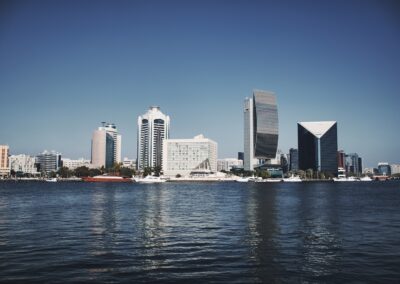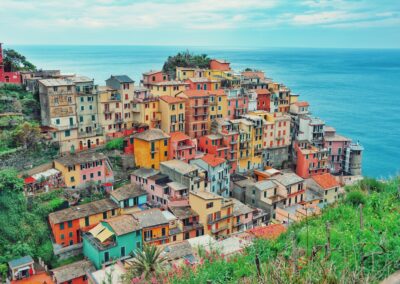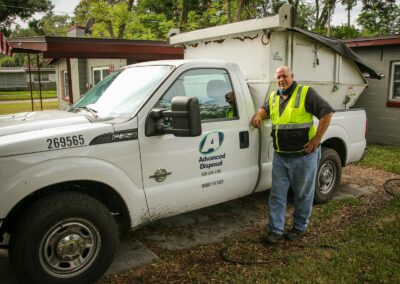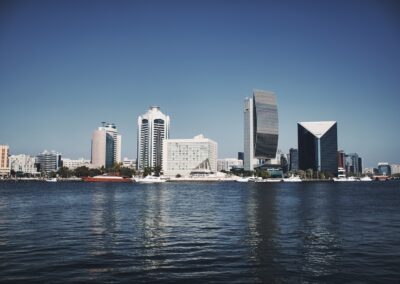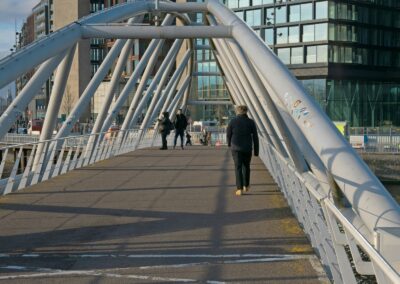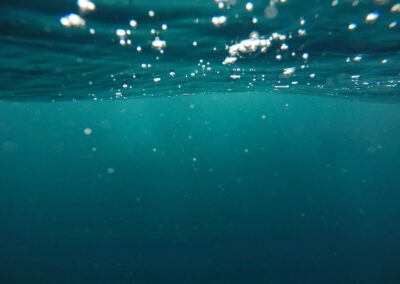Mitigating Risks Through Smart Solutions
Understanding the Concept of Ocean Urbanization
The idea of ocean urbanization challenges is gaining traction as coastal cities like Dubai and Riyadh explore innovative ways to expand urban spaces without compromising the environment. Ocean urbanization involves constructing floating or submerged cities to alleviate land shortages and accommodate growing populations. This ambitious venture promises significant benefits, including new living and working spaces, but it also presents unique challenges that must be carefully managed.
One of the primary challenges is the environmental impact. Building cities on or beneath the ocean surface can disrupt marine ecosystems, leading to potential harm to biodiversity. To address this, developers must employ eco-friendly construction methods and materials that minimize environmental disruption. Techniques such as using sustainable building materials, creating artificial reefs, and ensuring proper waste management can help mitigate these impacts.
Moreover, the structural integrity and safety of ocean urbanization projects are paramount. These structures must withstand harsh marine conditions, including strong currents, waves, and storms. Engineers and architects need to innovate continuously, designing buildings and infrastructures that are resilient and adaptable to the dynamic ocean environment. Advanced materials and engineering techniques, such as flexible foundations and energy-absorbing structures, play a crucial role in ensuring the longevity and safety of these oceanic cities.
Innovative Design and Planning Solutions
To overcome the ocean urbanization challenges, incorporating smart design and planning is essential. One innovative approach is the integration of renewable energy sources to power these cities. Solar, wind, and wave energy can be harnessed to create sustainable power systems, reducing reliance on fossil fuels and minimizing carbon footprints. Floating solar farms and underwater turbines are examples of technologies that can provide clean energy for oceanic urban developments.
Water management is another critical aspect of ocean urbanization. Freshwater availability is limited in marine environments, necessitating efficient desalination and water recycling systems. Advanced desalination technologies, coupled with greywater recycling and rainwater harvesting, can ensure a consistent and sustainable freshwater supply for residents and businesses in ocean cities. Implementing these systems requires innovative engineering and careful planning to balance resource use and environmental conservation.
Additionally, urban planners must prioritize the integration of green spaces and vertical farms within oceanic urban areas. These spaces not only enhance the aesthetic appeal of the city but also promote biodiversity and provide essential services such as air purification and temperature regulation. Vertical farms can supply fresh produce, reducing the need for imports and enhancing food security. Incorporating parks, gardens, and green rooftops into the urban design helps create a more livable and sustainable environment for residents.
Addressing Social and Economic Challenges
Beyond environmental and structural considerations, ocean urbanization also presents social and economic challenges. Ensuring affordability and accessibility is crucial to avoid creating exclusive enclaves that only cater to the wealthy. Policymakers and developers must work together to establish frameworks that support diverse communities and provide affordable housing options. This includes implementing policies that promote inclusive development and prevent socioeconomic disparities.
Economic sustainability is another important factor. Ocean cities must generate economic opportunities to attract residents and businesses. Developing industries such as tourism, marine research, and sustainable aquaculture can create jobs and stimulate economic growth. Moreover, integrating advanced technologies like AI and blockchain can enhance operational efficiency and create a robust digital economy within these urban areas.
Community engagement and participation are vital for the success of ocean urbanization projects. Involving local communities in the planning and development process ensures that their needs and concerns are addressed. This collaborative approach fosters a sense of ownership and belonging among residents, contributing to the social cohesion and resilience of the city. Public consultations, participatory design workshops, and transparent decision-making processes are essential tools for achieving this.
Technological Innovations for Sustainable Ocean Cities
Technological advancements are key to overcoming the ocean urbanization challenges. Smart technologies, such as the Internet of Things (IoT), can optimize the management of resources and infrastructure. IoT devices can monitor environmental conditions, energy consumption, and waste management systems in real-time, enabling efficient and adaptive urban management. This data-driven approach helps to minimize environmental impact and improve the quality of life for residents.
Artificial Intelligence (AI) and machine learning can further enhance the sustainability and resilience of ocean cities. AI can optimize energy usage, predict maintenance needs, and manage traffic and transportation systems. In the context of ocean urbanization, AI can also assist in monitoring marine ecosystems, detecting potential hazards, and ensuring compliance with environmental regulations. By leveraging AI, ocean cities can achieve higher efficiency and sustainability.
Blockchain technology offers another layer of innovation, particularly in ensuring transparency and security in urban governance. Blockchain can facilitate secure transactions, protect data privacy, and enhance trust in digital services. For instance, blockchain can be used to manage property rights, track supply chains, and verify sustainable practices. Integrating blockchain into the governance of ocean cities can create a more transparent and accountable urban environment.
Conclusion: A Sustainable Future for Ocean Cities
The successful development of ocean cities hinges on addressing the ocean urbanization challenges through innovative design and planning. By prioritizing environmental sustainability, social inclusivity, and economic viability, these urban areas can become models of modern urban living. Cities like Riyadh and Dubai, with their strong commitment to innovation and sustainable development, are well-positioned to lead this transformative journey.
In conclusion, ocean urbanization presents both significant challenges and remarkable opportunities. By embracing advanced technologies, renewable energy, and sustainable design principles, we can create thriving ocean cities that harmonize with the natural environment. Collaborative efforts among policymakers, developers, engineers, and local communities are essential to realizing this vision. As we navigate the complexities of ocean urbanization, our goal should be to build resilient, inclusive, and sustainable urban spaces that benefit both current and future generations.
Ultimately, the future of urbanization lies not just on land but also in the vast expanses of our oceans. By addressing the challenges head-on and leveraging innovative solutions, we can create a new era of urban living that promotes environmental stewardship, economic prosperity, and social well-being.
#OceanUrbanization #SustainableDesign #InnovativePlanning #EnvironmentalImpact #UrbanDevelopment #SmartCities #SaudiArabia #UAE #Riyadh #Dubai


